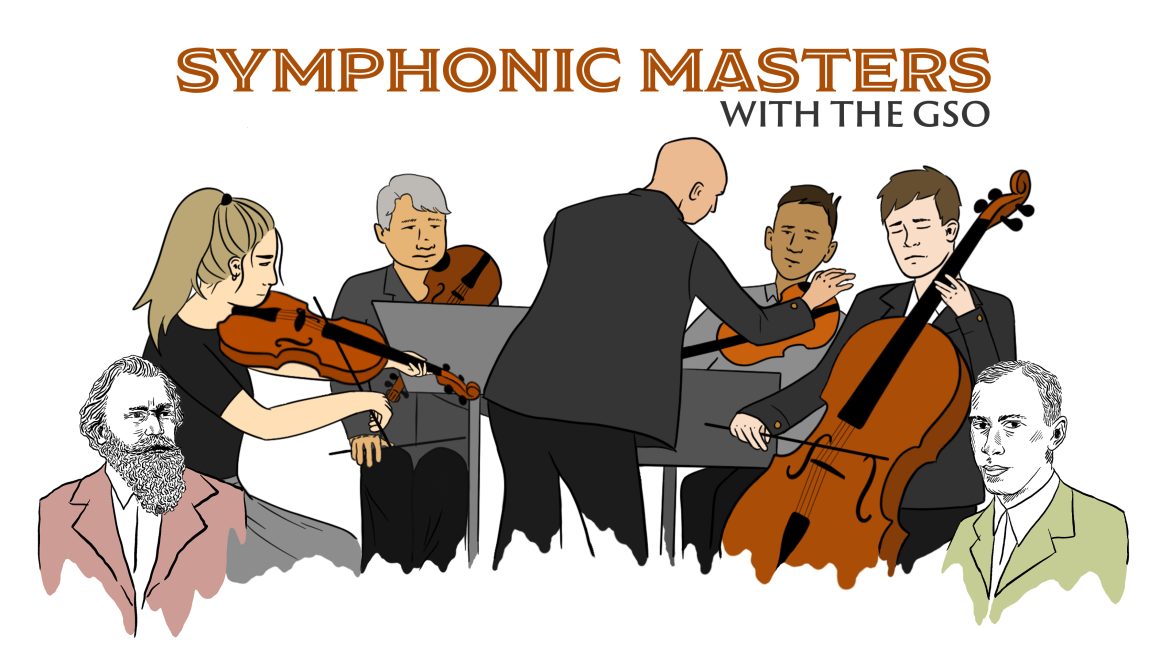Symphonic Masters with the GSO
27 Oct 2:00pm
Experience the magic of Prokofiev’s “Romeo and Juliet Suite,” a masterpiece that tells the most famous love story of all time. Today, the GSO presents a unique performance, combining pieces from both the orchestral suites, offering a fresh perspective on this beloved work.
Brahms’ final symphony, the fourth, is a masterpiece that captures the full spectrum of orchestral colors, crafted in the classical style while also ushering in the Romantic era. With sweeping, vivid musical strokes and unforgettable melodies, this symphony stands as a testament to Brahms’ genius.
Join us for an afternoon of musical brilliance and unforgettable memories.
Serge Prokofiev – Selections from Romeo and Juliet Suite 1 & 2
Sergei Prokofiev’s “Romeo and Juliet” is a ballet composed in 1935-1936 based on William Shakespeare’s play of the same name. Prokofiev also arranged three orchestral suites and a set of ten pieces for piano from the music for the ballet. The GSO have selected from suite 1 and 2 for this performance: Montagues and Capulets, Madrigal, Minuet, Masks, Death of Tybalt, Friar Laurence, Romeo at Juliet’s Tomb
Prokofiev’s suites are some of the most memorable and dramatic moments from the ballet, capturing the essence of his powerful and evocative compositional style. The suites are often performed in concert and have become popular pieces in the orchestral repertoire.
Claude Debussy – Rhapsody for Saxophone and Orchestra – soloist Niels Bijl
In 1901 American saxophonist Elise Hall had requested Claude Debussy to compose a piece for the saxophone, however he didn’t take the commission seriously and looked scornfully on the abilities of Hall as a saxophonist and as such did not work on the commission for some time. Hall made many trips to Paris to meet with Debussy and he eventually began to work on the piece and sent the score for saxophone and piano to Hall in 1911. It was subsequently arranged for orchestra by Jean Roger-Ducasse in 1919.
Johannes Brahms – Symphony No. 4
Johannes Brahms’ Symphony No. 4, Op. 98, is a monumental work in the symphonic repertoire, composed in 1884-1885. This highly regard symphony explores emotional depth, structural coherence, and symphonic innovation, making it a cornerstone of Romantic symphonic repertoire. After its premiere performance the symphony received mixed reviews. Listeners were challenged by the dense, rich textural colours and the complexity of its structures. It is now viewed as the work of a genius and rightly celebrated as one of the great symphonic achievements, a work that combines romantic intellectualism and emotional expressionism. The fourth symphony by Brahms and one that places him at the vanguard of symphonic composers, a rightful heir to Beethoven’s crown.
 Buy Tickets
Buy Tickets







